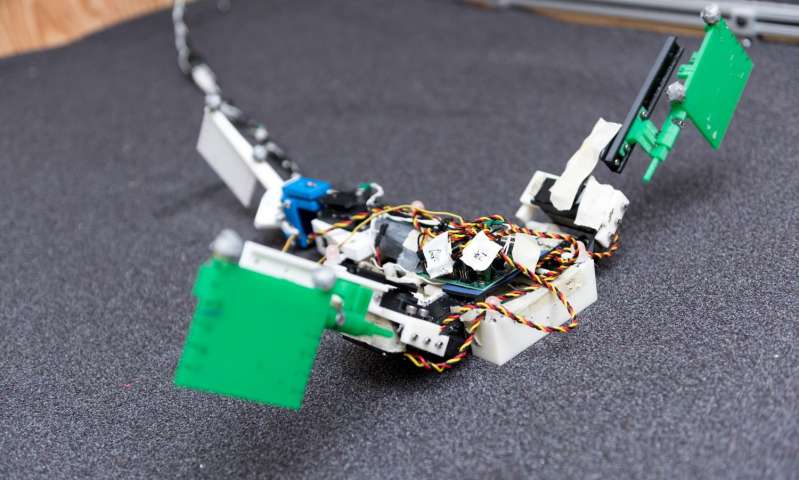The African Mudskipper Shows the Way

Credit: Rob Felt, Georgia Tech
ScienceDaily.com reports on how Georgia Tech School of Physics researchers, and a multidisciplinary team, have created a 3D-printed MuddyBot, a mechanical robot that mimics movement of the African mudskipper.

The Georgia Tech Muddybot – Credit: Rob Felt, Georgia Tech
The Muddybot, above, uses movement principles based on the mud skipper to navigate across a surface filled with granular materials. The bot is powered by electric motors has two limbs and a powerful tail.
The locomotion, researchers believe, is similar to how early terrestrial animals moved on mud and sand 360 million years ago using powerful tails to propel themselves and to climb.
The robotics research was sponsored by the National Science Foundation, the Army Research Office, and the Army Research Laboratory.
The team included physicists, biologists, and roboticists from the Georgia Institute of Technology, Clemson University and Carnegie Mellon University.
Tags: biotechnology, robotics, mathematics, physics, bioengineering, biology
Journal Reference:
- Daniel I. Goldman et al. Tail use improves soft substrate performance in models of early vertebrate land locomotors. Science, July 2016 DOI: 10.1126/science.aaf0984






